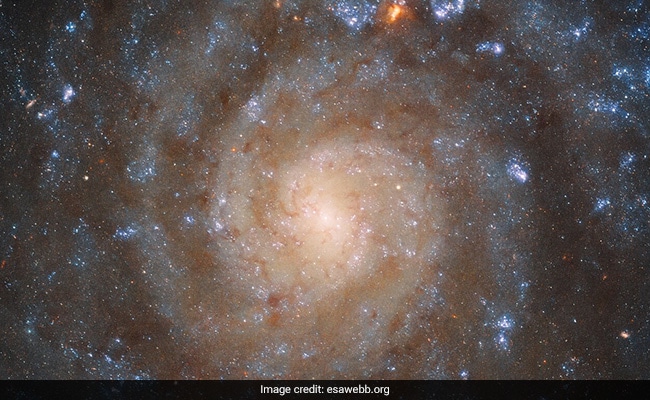
The spectacular image features the spiral arms of the IC 5332 galaxy.
New Delhi:
NASA’s James Webb Space Telescope has captured an image of a spiral galaxy with unprecedented details. The galaxy, which is located more than 29 million light-years away, is slightly bigger than Milky Way.
The spectacular image, which was taken by the Mid-InfraRed Instrument (MIRI), features the spiral arms of the IC 5332 galaxy. The galaxy was also observed by the Hubble Space Telescope earlier. While the Hubble telescope too delivered an impressive picture of IC 5332, it could not observe the mid-infrared regions of the electromagnetic spectrum because its “mirrors were not cool enough”.
This is why scientists employed MIRI, which is JWST’s only instrument sensitive to the mid-infrared region. MIRI is capable of delivering sharp mid-infrared images and can operate at an extremely cold temperature of –266 °C, which is 33 °C lower than other observatories and just 7 °C warmer than absolute zero temperature, according to the European Space Agency (ESA).
MIRI helped capture the details in the spiral galaxy that the Hubble Space Telescope could not. IC 5332 has a diameter of around 66,000 light-years which makes it bigger than our galaxy. Besides this, the galaxy also has a strategic position where it is “almost perfectly face-on with respect to Earth”. This allows astronomers to observe the “symmetrical sweep of its spiral arms.”
In the image taken by JWST, continual tangles of structures are seen that echo the spiral arm shape of the galaxy. The picture taken by the Hubble telescope of the same galaxy shows dark regions that appear to separate the arms.

According to ESA, this difference is due to the dusty regions of IC 5332 through which most of the visible and ultraviolet light fails to pass through and results in dark spaces as seen in the Hubble image. But mid-infrared light can penetrate through these regions and this is why the JWST image did not feature dark spaces.
The two images also have different stars which are because some stars appear brighter in ultraviolet, visible, and infrared light, respectively.





